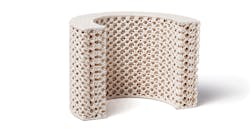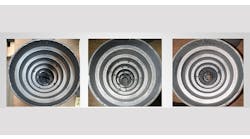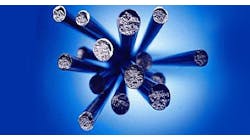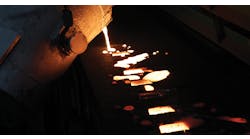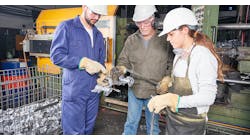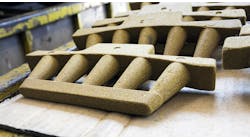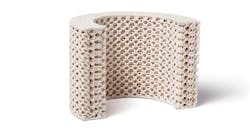Q: Our foundry is considering purchasing a 3D printer for coremaking. What are the options available to us in the selection of a sand binder?
A: Currently there are three chemistries used for 3D printing of sand: furan resin, cold hardening phenolic (CHP) resin, and inorganic resins based on silicates. There are differences in the ways that each chemistry is used.
How are they different?
All three technologies use a co-reactant, catalyst, or activator package that is mixed onto the sand prior to the sand being layered in the print bed. The binder systems differ in the resins that they produce and the casting properties that result.
Inorganic resins offer good casting quality and have the benefit of low emissions during printing and casting – because they are inorganic. These resins require a microwaving or baking step to facilitate curing after the build box exits the print area.
Furan resins are known for resistance to veining and excellent shakeout result. These systems are typically air cured.
Cold-hardening phenolic resins give excellent casting surface finish but can be problematic in the shakeout sequence, due to a secondary curing at metalcasting temperatures. These resins have excellent print dimensional accuracy. CHP printed sands typically are exposed to IR heat or an oven to drive the initial cure.
CHP resins also have different storage requirements to ensure maximum shelf-life.Are there issues with print-head compatibility and maintenance down time ?
The physical and chemical parameters of each of three resin types are adapted to the needs of the print head, to ensure reliable binder jetting and maximum open-nozzle time. More open-nozzle time means less down time for your 3D printer, to help your foundry recoup its investment and maintain productivity.
A matching cleaner chemistry is typically applied to avoid print-head damage.
Will we need a coating for 3D-printed sands?
Depending upon the chosen chemistry and desired casting properties, yes … a coating might be necessary. Your ASK Chemicals representative can assist with the choice of an appropriate coating.
These resins sound like the no-bake resins we are familiar with… Can we use standard no-bake resins in a 3D printer?
No. To ensure the best-possible print resolution, these resins are specially formulated and filtered to be effective with 3D printers. 3D printers are less tolerant of higher viscosities and small particulate matter than common foundry continuous or batch mixers.
Does ASK Chemicals offer these binder formulations?
ASK Chemicals offers resins for all three chemistries:
• INOTEC™ 3D – Inorganic binder system consisting of the liquid INOTEC 3D printing fluid , the INOTEC PROMOTOR and a INOTEC additive; a three part system
• NOVASET™ 3D – Cold hardening phenolic resin; a two part system
• CHEM-REZ™ JET SET 3D – Acid cured furan resin; a two part system
Which system should I choose?
Based on your application and cast metal requirements, our 3D binder portfolio for binder jetting offers the flexibility of choice prior to the purchase of your machine. A joint consultation with your ASK Chemicals representative and the 3D printer manufacturer may be necessary.
Join the Conversation. Email Your Questions for ASK Chemicals
